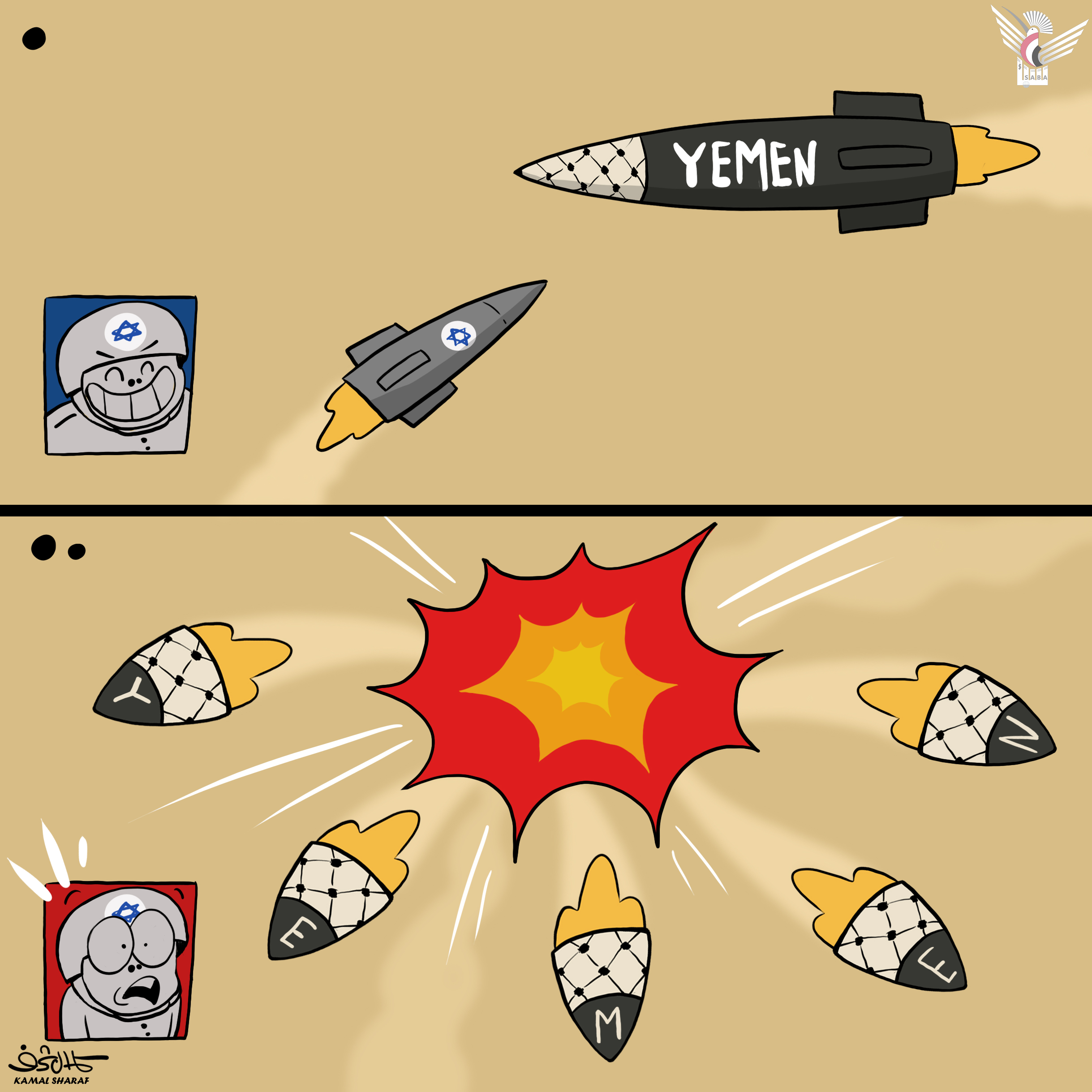Beirut – Saba:
The Lebanese news outlet Al-Manar affirmed that the recent strikes by the Yemeni Armed Forces deep within the occupied territories have imposed a new equation: “escalation for escalation” and a war of attrition in response to a war of annihilation.
In a report on Yemen’s position in support of Gaza, Al-Manar stated that these developments signal a qualitative shift in the balance of power in the region, with the “myth of Zionist deterrence” fading under the weight of Yemen’s ongoing attacks.
By persistently launching precision military strikes targeting the heart of the Zionist entity, the Yemeni Armed Forces have—according to the report—moved beyond mere solidarity with Gaza. They have become a decisive player in the regional deterrence equation, reshaping the contours of the confrontation in the region.
The report highlighted the significance of the timing of these strikes—especially those carried out in broad daylight—suggesting Yemen’s understanding of the psychological impact on the enemy’s home front. This has led to partial paralysis of daily life and a notable increase in panic across settlements, exemplified by the sudden evacuation of an entire sports stadium following a security alert.
On the ground, the reality shows that Sana’a now controls the pace of escalation and holds the initiative, actively implementing a strategy of “compound attrition” against the enemy. This is evident in Yemen’s ability to impose an informal air blockade, disrupt strategic ports, and even threaten specific installations such as the port of Haifa.
The report underscores that Yemen’s stance has transcended military calculations, reflecting a clear ethical and nationalist commitment in confronting the ongoing aggression on Gaza. Despite continuous bombardment of infrastructure in and around Sana’a, Yemen’s leadership insists on continuing operations as part of its responsibility toward the Palestinian people and their resistance.
This approach has bolstered Yemen’s political presence in the conflict equation and disrupted the calculations of the occupying regime, which has long relied on Arab and Islamic fragmentation.
The Yemeni strikes have also strengthened the Palestinian resistance’s negotiating position, as it has rejected ceasefire proposals that solely meet the occupier’s demands.
Since the beginning of the war on Gaza, Yemen has launched over 70 missiles and more than 300 drones. According to the report, this has had a clear impact on the dynamics of the conflict, altered deterrence equations, and placed the occupation in a constant state of alert—escalating the political and economic cost of the aggression.
In a pointed reminder of the failure of enemy intelligence and military capabilities—especially those of the U.S.—the report noted that American satellites and defense systems have failed to track the trajectories of missiles and drones coming from Yemen, exposing deep flaws in the enemy’s surveillance and deterrence infrastructure.
Despite the high cost of operating air defense systems, they have failed to ensure “complete security,” while Yemeni drones are sending layered messages: the threat is no longer limited to Gaza or the north but now extends deep into the strategic heartland of the occupation.
Yemeni attacks have not been confined to the military front; they’ve also had significant economic and psychological repercussions. Losses due to halted flights, shrinking tourism, disrupted port operations, and maritime navigation in the Red Sea and Indian Ocean are estimated in the billions of dollars—at a time when the Israeli economy is already under strain from the cost of the war on Gaza.

| more of (International) |




